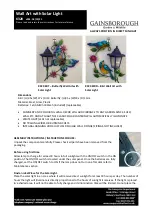
NOTE
The laser is also switched off when logging in on the device via a terminal with the
sMN
SetAccessMode
telegram command (see the Listing Ranging sensors telegram,
no. 8014631).
Changes to the device are only taken into account with the
sMN Run
log-off command;
this also switches the laser back on.
3.5.5
Remission value
Remission is the ability of a material to reflect light. The remission value of an object
correlates with the ratio of the amount of the laser light emitted by the LiDAR sensor
that falls on the object and the amount that is reflected by the object (see Lambert-
Beer law).
Shiny surfaces have different remission values at different angles of incidence. In the
case of shiny surfaces, maximum remission is achieved when the beam makes vertical
incidence. A multiple of the typcial remission value of a material is reached at such
places and may cause invalid measurement values. On such occasions distance values
will be flagged with "1" and remission values with "FF FF" in the measurement data out‐
put,
see "Telegram structure", page 52
, LMDscandata - reserved values.
Matt and dull surfaces have a diffuse remission and therefore have similar relative
remission values independent of the angle of incidence.
Table 3: Typical remission values of frequently used materials
Material
Typ. relative remission value
Rubber tires (vulcanized, black)
2%
Foam rubber (black)
2.4%
Photographic board (black, matte)
10%
Cardboard (gray)
20%
Wood (untreated fir, soiled)
40%
PVC (gray)
50%
Paper (white, matte)
80%
Plaster (white)
100%
Aluminum (black anodized)
110 … 150%
Steel (stainless, shiny)
120 … 150%
Steel (high gloss)
140 … 200%
3.5.6
Angle channel
The motor of the device rotates with 100 Hz and enables the device to reach a scan‐
ning frequency of 600 Hz by way of deflecting the laser beam on a six-sided mirror
wheel.
Assuming that the motor turns at a constant speed, the sensor creates every 1.16 µs a
new measurement value in order to reach an angular resolution of 1/12°. However,
due to hardware limitations there are minor fluctuations in the motor speed. Due to
external influences (e.g. high acceleration or deceleration of the device), these ripples
can reach a deviation of several tenths of a degree, which may lead in measurement
error of some centimeters for object measurement.
The angle channel allows an adjustment of the measurement values to their true angle
position. When activated, an additional correction value is provided in the measure‐
ment telegram for each measurement point.
3
PRODUCT DESCRIPTION
18
O P E R A T I N G I N S T R U C T I O N S | LMS4400/LMS4500
8023202/16S6/2020-01-24 | SICK
Subject to change without notice
















































